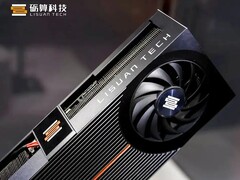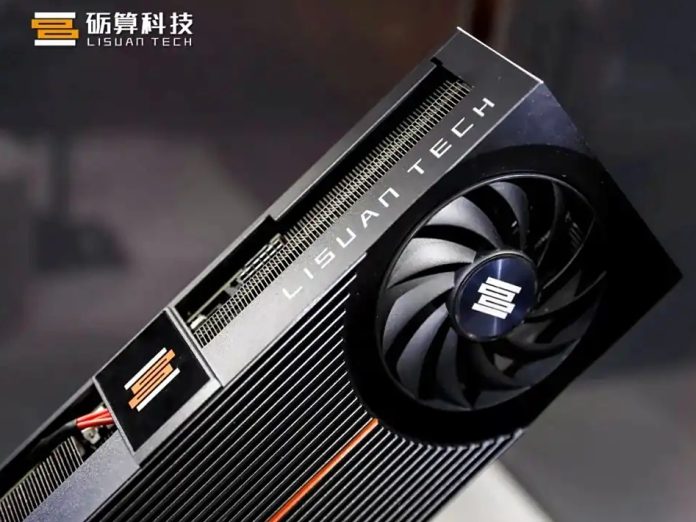
Lisuan Technology has unveiled a new self-sufficient, domestically produced 6 nm GPUs under its TrueGPU Tiantu architecture, offering 24 TFLOP/s compute, intelligent multitasking, NRSS upscaling and SR-IOV support for gamers and AI workloads.
Lisuan Technology has formally introduced its first discrete graphics line, the 7G100-series “eXtreme” cards, in an announcement dated 26 July. The launch marks the first time a Chinese vendor has offered a fully self-designed GPU—from instruction set to compute core—under the in-house TrueGPU Tiantu architecture.
TrueGPU relies on several hardware tricks to squeeze more work out of each cycle. Up to 48 concurrent tasks can be scheduled without bubbles for what the company calls “intelligent multitasking”, while an out-of-order triangle engine is claimed to raise raster efficiency by 50 percent in suitable scenes. A block-based matrix layout, NRSS upscaling (positioned as a DLSS/FSR rival), and SR-IOV support for up to 16 virtual GPUs complete the feature set.
Two initial boards are planned. Both are fabbed on TSMC’s 6 nm N6 process. The consumer-oriented 7G106 pairs 12 GB of GDDR6 on a 192-bit bus with 24 TFLOP/s (FP32) compute, 192 texture units, and a single 8-pin power connector, hinting at roughly 225W TDP. The workstation-class 7G105 doubles memory to 24 GB ECC and retains the same peak throughput while adding pro-features such as SR-IOV and 8K AV1/HEVC codecs.
Early numbers are cautiously encouraging. Lisuan cites a 3DMark Fire Strike score of 26,800 points, matching Nvidia’s GeForce RTX 4060, and a Steel Nomad score of 2,268. Geekbench 6 OpenCL pushes that advantage to ~111,000 points—about ten percent ahead of the RTX 4060 in the same test. In-house demonstrations showed Black Myth: Wukong and Shadow of the Tomb Raider running at 70–80 frames per second (fps) on high settings at 4K.
Lisuan plans to sample both cards in August 2025, with mass production slated for September. If third-party testing confirms the claimed performance and software maturity, the 7G100 series could become the first domestically produced Chinese GPU line to compete meaningfully with AMD and Nvidia in gaming, AI, and cloud-rendering markets.
| 7G105 (Pro/AI) | 7G106 (Gaming) | |
|---|---|---|
| Architecture / Node | TrueGPU (G100), 6 nm N6 | TrueGPU (G100), 6 nm N6 |
| Peak FP32 | 24 TFLOP/s | 24 TFLOP/s |
| Texture Units (TMUs) | 192 | 192 |
| Raster Units (ROPs) | 96 | 96 |
| Memory | 24 GB GDDR6 (ECC) @ 192-bit | 12 GB GDDR6 @ 192-bit |
| PCIe interface | PCIe 4.0 ×16 | PCIe 4.0 ×16 |
| Power connector | 1 × 8-pin (TBD) | 1 × 8-pin (~225 W) |
Related Articles
Nathan Ali – Tech Writer – 274 articles published on Notebookcheck since 2024
I’m a tech geek at heart, and it all started back in middle school. I’ve always loved messing around with gadgets—rooting Android phones and jailbreaking iPhones was my thing. I’ve definitely bricked a few phones along the way, but that never stopped me from trying. For over a decade, I’ve been glued to tech news, always trying to keep up with the latest and greatest. But I’m not just about tech; I’m also really into cars and love following what’s new in the automotive world. Oh, and I should mention that I also worked as a freelance writer. I can’t name-drop the companies I wrote for (you know how it is), but it was a pretty cool experience. I switch between reading, gaming, and keeping up with all the tech and car stuff in my downtime. It’s a mix that keeps things interesting and fun for me.
Nathan Ali, 2025-07-27 (Update: 2025-07-27)

